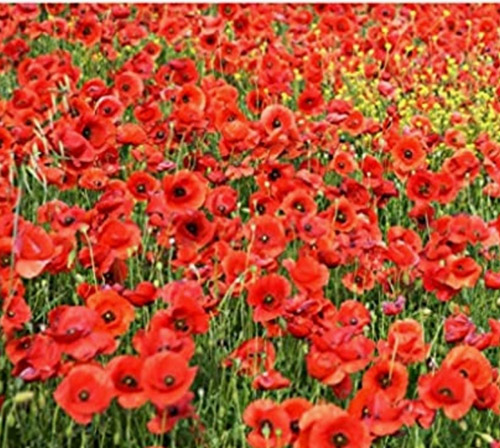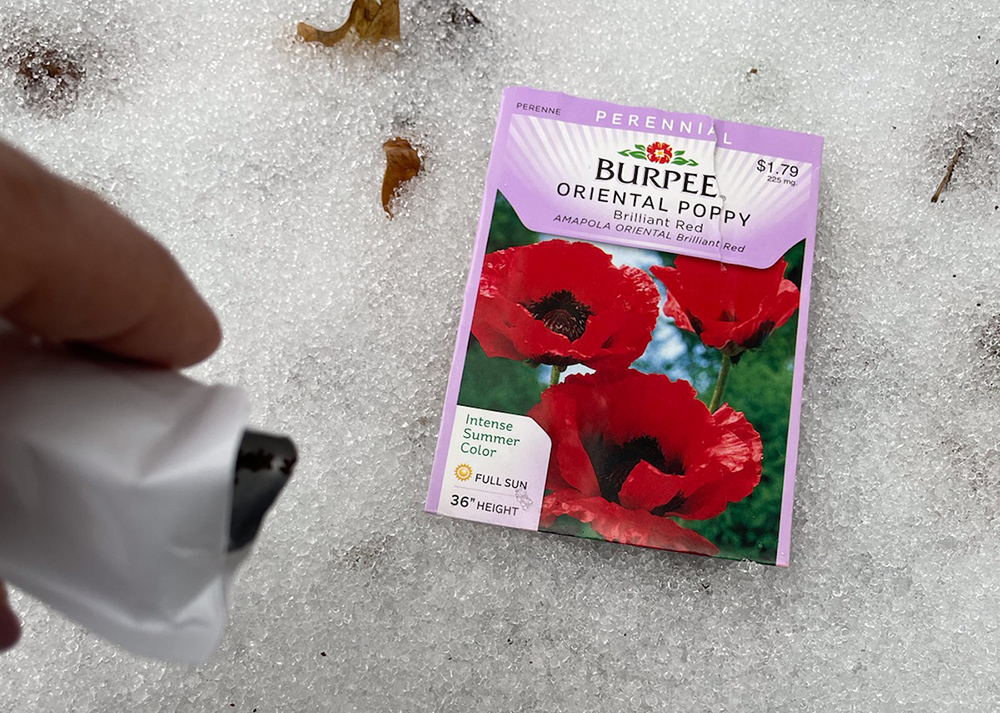By Tammy Thornton
Over the last few weeks, the snow lover in me has enjoyed looking out of my picture window and seeing a blanket of white. Living by the coast, any measurable snow in our Shore Local area is usually followed by rain that washes away my children’s hopes for snowballs and snowmen. So, though many of you may not agree, I think it’s been a nice change to see a little accumulation. Growing up in Pittsburgh where one snowfall piles on top of the other throughout the winter, I feel a certain nostalgic comfort from being surrounded by snow. Ironically, in some circumstances, snow can provide a level of protection and comfort for your garden as well, by trapping air and insulating plants from the cold. Lately, as I learn more about the necessity of cold to aid in the germination of certain plants, like poppies, I have found another reason to embrace the various seasons.
Though I long for spring, thoughts of bright red poppies bursting from my garden fill my dreams while we wait. Every life stage of poppies is fascinating. From their fuzzy, oval buds, colorful crepe paper-like petals and black centers, to their unique seed pods, poppies provide interest all along the way. While we are smitten by the colorful petals of poppies, bees are attracted to the abundance of pollen found on their long stamens.

Fortunately, we don’t have to wait until spring to plant poppies. According to burpee.com, “Poppies are best when they are grown from seed that is planted in fall or winter, even in cold winter areas. The seeds need to go through the natural freeze and thaw cycles to germinate…” After a recent snow, I excitedly brought my colorful packets of poppy seeds to the garden and sprinkled the tiny seeds directly over the snow. The contrast of the black seeds against the white snow helps you see where the small seeds have landed. There is no need to cover the seeds since they need light to germinate. Due to their long taproot, poppies do not transplant well. Choose a sunny location with well-drained soil. Our sandy South Jersey soil should aid in drainage.
You may have purchased an artificial “remembrance poppy” sold by the American Legion in memory of those who have died serving our country. They were originally worn at the American Legion’s 1921 National Convention in memory of those that had lost their lives in World War I. Canadian physician Lieutenant-Colonel John McCrae wrote the famous war-time poem, “In Flanders Fields” after his friend and fellow soldier died in battle. He was struck by the red poppies that sprung up and bloomed between the make-shift graves and crosses of soldiers. Later, inspired by the poem, American remembrance advocate Moina Belle Michael wrote her own poem called “We Shall Keep the Faith” and proposed that silk or paper flowers be worn to remember fallen soldiers. Today, we wear the poppies in memory of all who have given the ultimate sacrifice for our country. In other countries such as the United Kingdom, Canada, France, Belgium, Australia, and New Zealand, poppies are worn on Remembrance Day or Armistice Day to commemorate the anniversary of the 1918 Armistice.
Though these “Flanders poppies” (papaver rhoeas) are annuals, they will readily self-seed. You can also grow vibrant Oriental poppies (papaver orientale), which are perennials. Poppies enjoy the cool temperatures of spring but will go dormant in the heat of summer. Be careful not to overwater. Iceland poppies (papaver nudicaule) are also good candidates for winter sowing in containers. Just be sure to carefully transplant while the seedlings are young before the taproot is too large to disturb. Plant poppies behind late-blooming perennials since as the poppies go dormant, they will leave unsightly foliage, as well as leave a bare spot of color in the garden. As the late-bloomers start to grow, they will cover the foliage and provide new interest to your garden.
Tammy Thornton is a mom of four, a substitute teacher, and a Sunday school teacher. She is passionate about gardening and cooking, and loves the beach.











